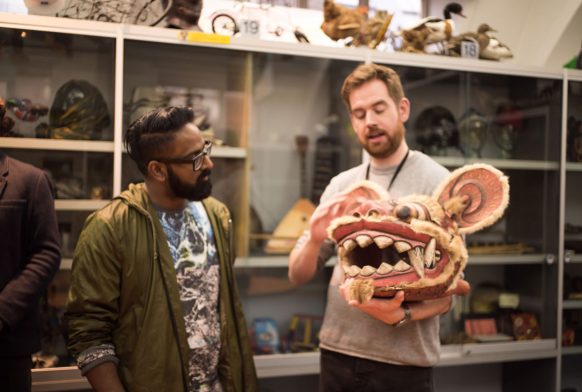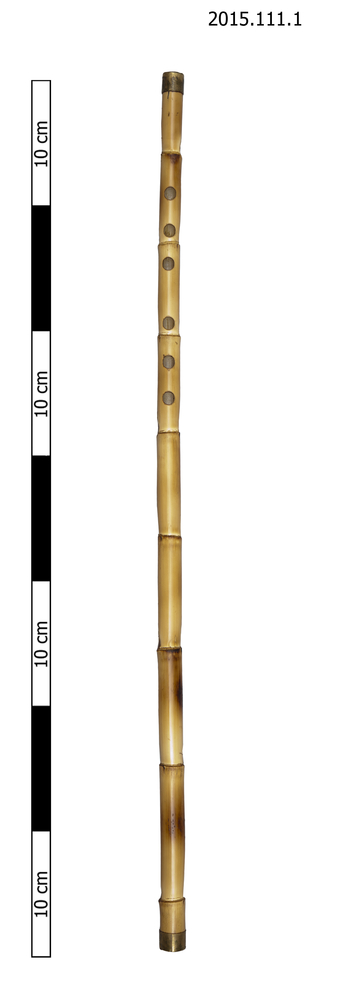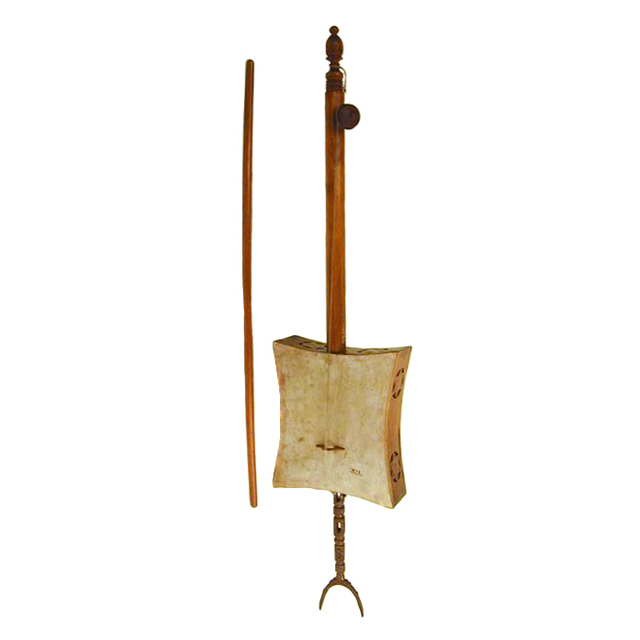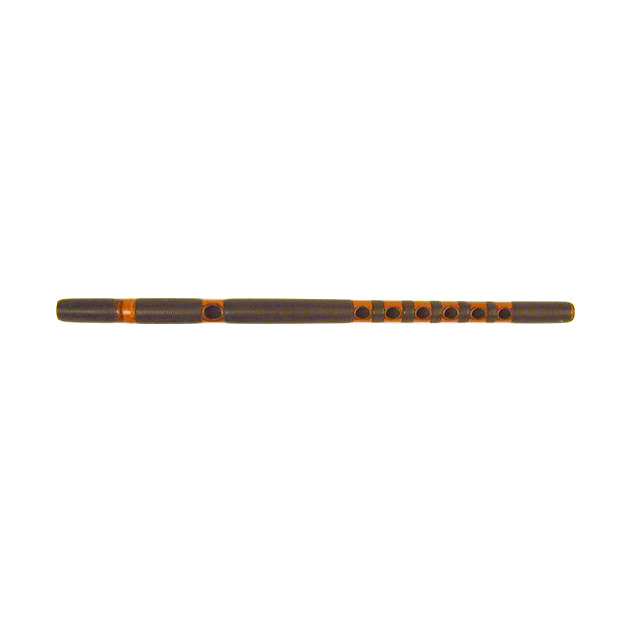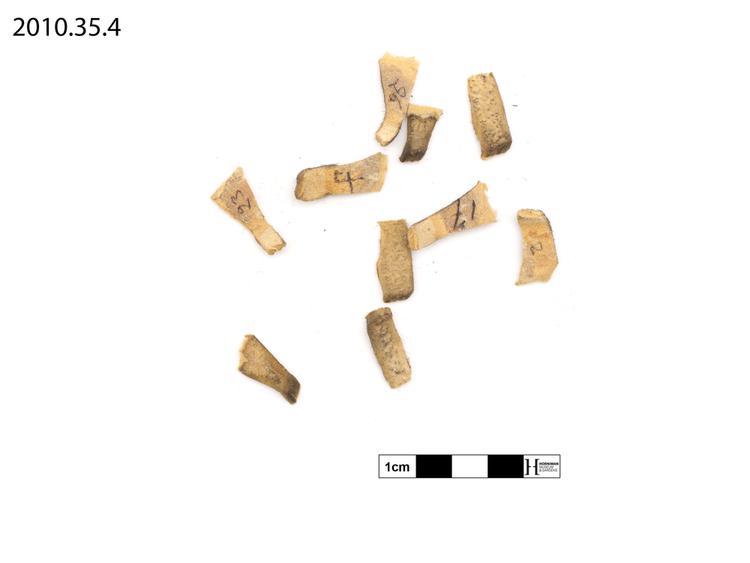Double membrane dondo or 'talking drum', with leather tension straps stretched between the two skins. Wooden hourglass shaped body. Colourful woven strap.
The talking drum is held horizontally in the arm-pit. Pressing with the elbow at the waist of the drum and squeezing the tension laces with the fingers will tighten the skin of the drumhead.
The other hand holds the ‘J’ shaped beater which is tapped on the skin.The Talking Drum is a double headed drum with a skin at either end of the hour glass shaped body of the drum. The two skins are connected by the tension strings so when the strings are squeezed the skins are tightened and become thinner. When the skin is struck with the beater a tight, thin skin will produce a higher pitched note than a loose, thicker skin. By squeezing and releasing the strings the player can produce a range of notes that can mimic the intonation of human speech. In the past this type of drum was used to send messages from one village to another, (sometimes called the bush telegraph).
Traditionally used by drummers, always men, to announce the arrival of important people, visitors, the start of a ceremony etc. As well as sending messages. Also used in dance performances to provide rhythms.



